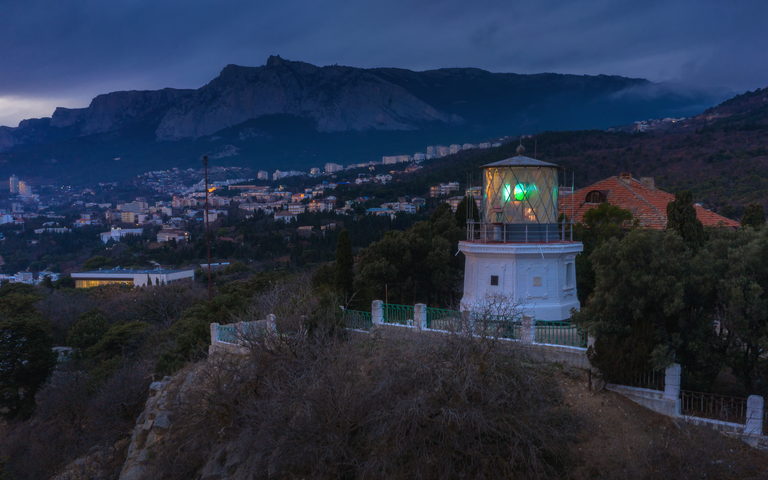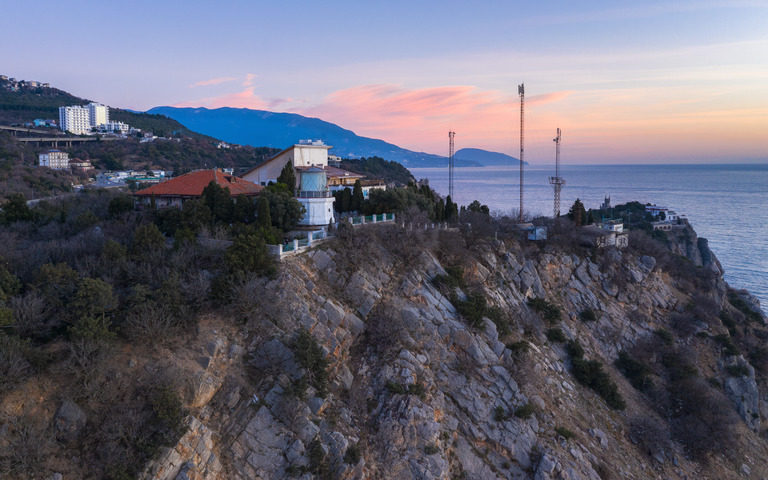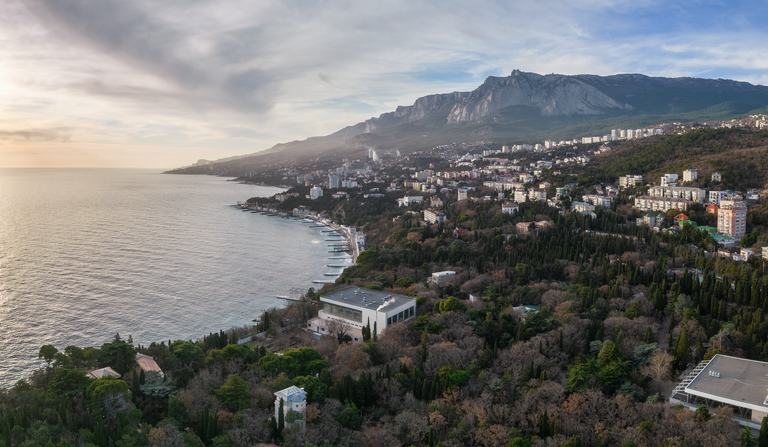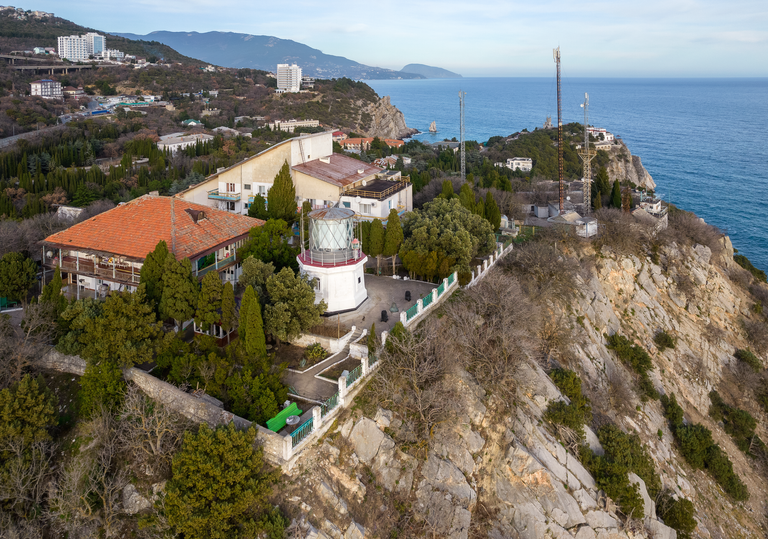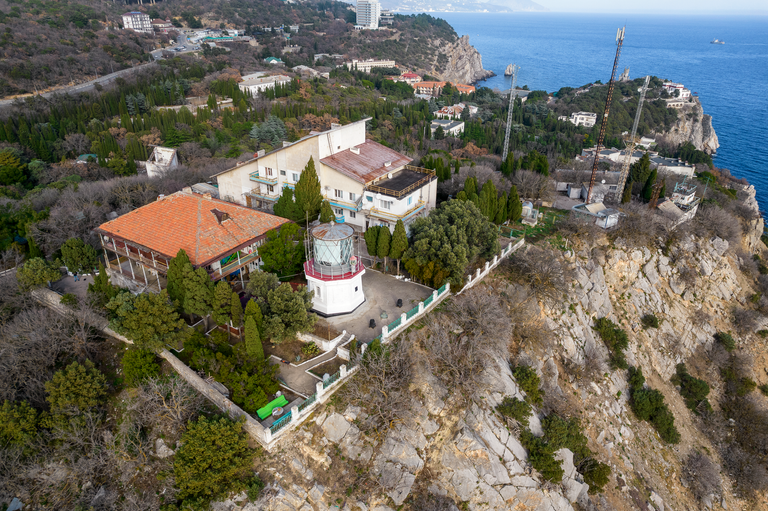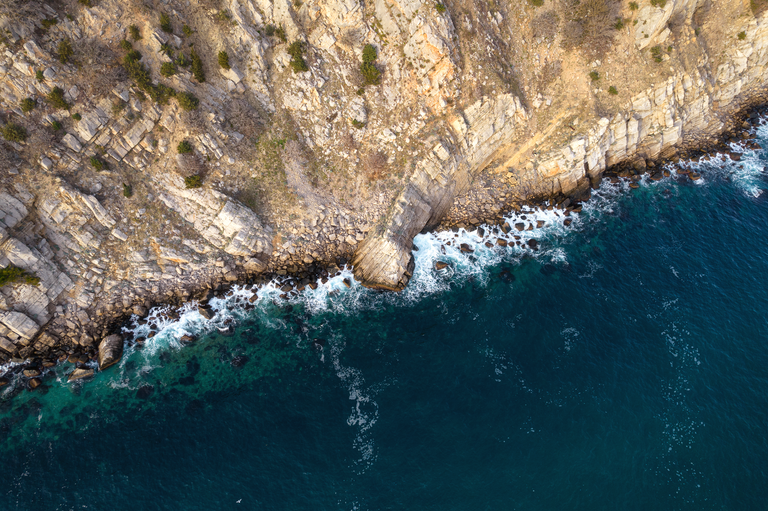Last year I participated in a series of small expedition trips as part of a lighthouse research project. The aim of the project was for the specialists of the Center for Contemporary History (a non-profit organization of which I recently joined) to investigate the current state and possible tourism potential of five historical sites — lighthouses. I have visited two of them.
Most of these lighthouses, despite their considerable age or location in hard-to-reach places, are in working condition and serve for the benefit of man. Like, for example, the one I want to talk about today — the Ai-Todor Lighthouse, where I went in December.
The name of the lighthouse was given according to its location: it stands on Cape Ai-Todor, the Crimean peninsula, near the town of Gaspra. This edge of the cape has a high, steep shore hanging over the Black Sea, and although the lighthouse building is not very high, only 9.2 meters, it is located at an altitude of 78 meters above sea level. This is quite enough for work and excellent visibility of the light signal.
As you can see in the photos, the lighthouse is located literally a few meters from the edge of the cliff, so there are magnificent views from there, especially if you go a little higher, to the lighthouse itself. From the height of the drone flight, of course, the views are even better and more extensive :) In addition, it is quite difficult to take good photos of the lighthouse from the ground: it is surrounded by trees, buildings and a cliff. I couldn’t help but fly there, so most of the photos in the post, except for those taken with a phone, were taken with the help of my drone.
So, about the lighthouse and its vicinity. The Ai-Todor lighthouse was founded in 1835 by order of the Commander-in-Chief of the Black Sea Fleet of the Russian Empire M.P. Lazarev. The place was not chosen by chance: once there was an ancient signal tower of the ancient Romans, who at the end of the 1st century AD established control over the peninsula, which at that time was called Tauris. Moreover, at the same time, the Romans built the Charax fortress, military camp on Cape Ai-Todor, which housed the military garrison.
The territory of the camp was large, about 4 hectares, with two rows of walls and several buildings, including several barracks, houses, a praetorium with an altar of Jupiter, thermae and nymphaeum. We took a short walk in the park, which is located on Cape Ai-Todor on the territory of the former fortress in search of the remains of its buildings. We stumbled upon fragments of a fortress wall made of huge boulders, the remains of a nymphaeum and the foundation of some other building, most likely one of the barracks. Not being a specialist, I will not go deeply into the details of history and archeology, so as not to confuse anything :)
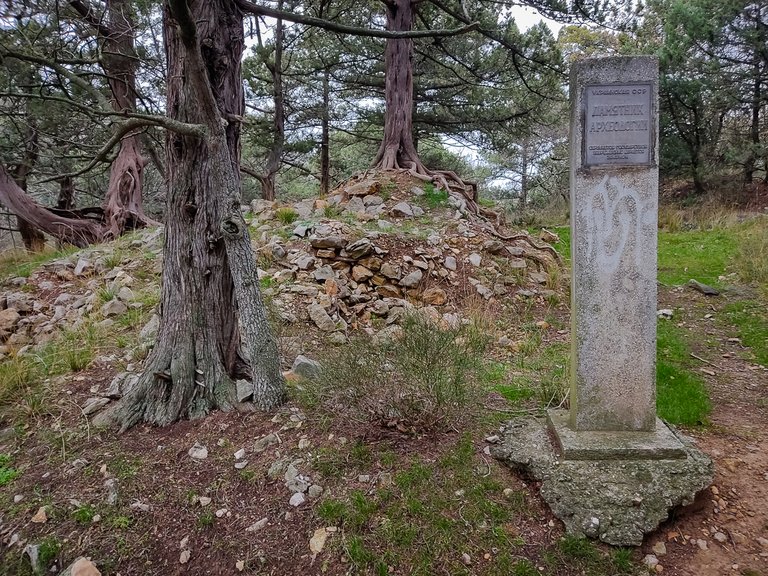 | 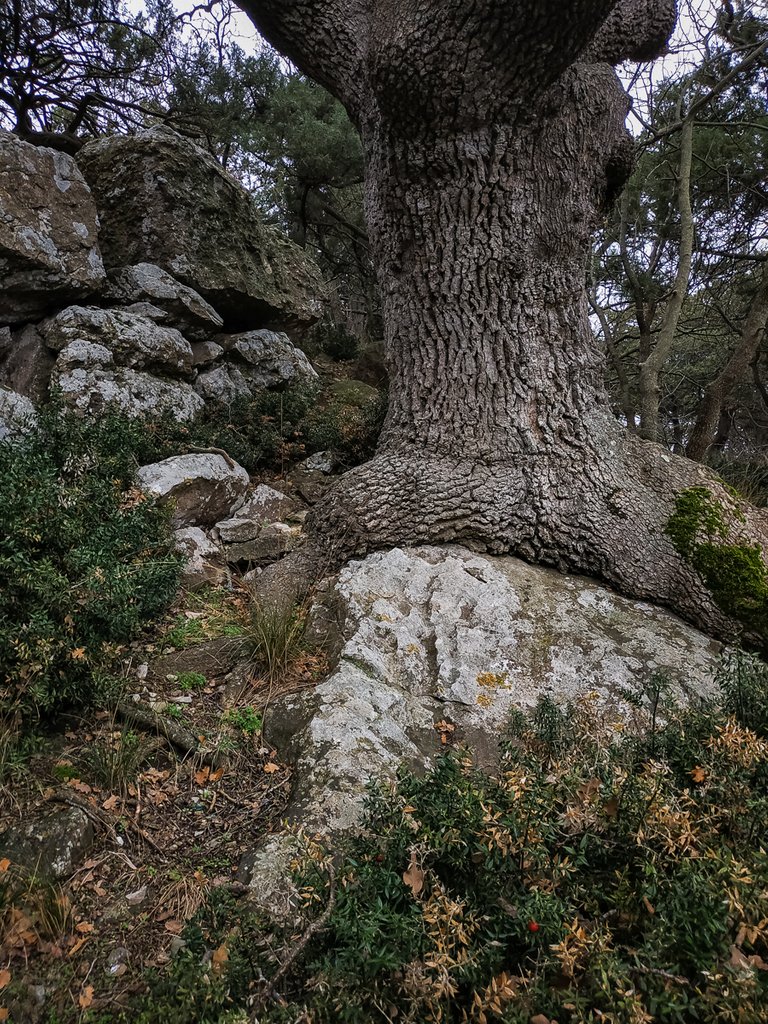 | 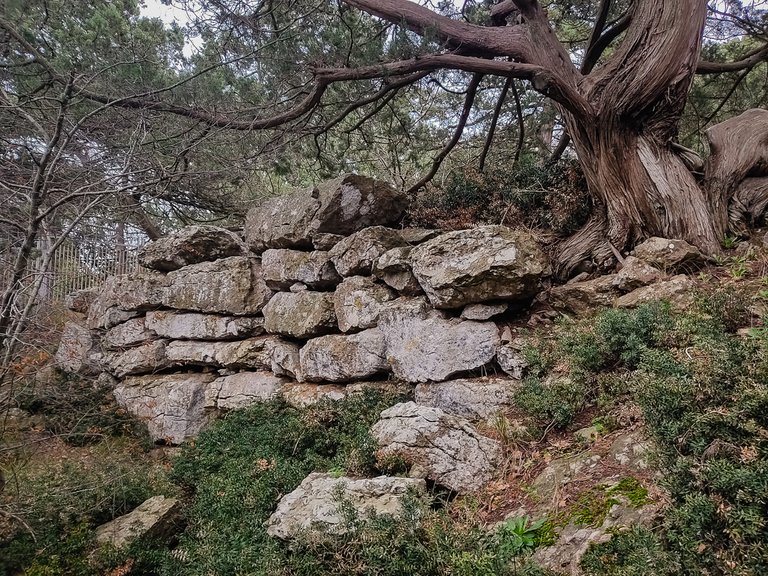 |
|---|---|---|
 | 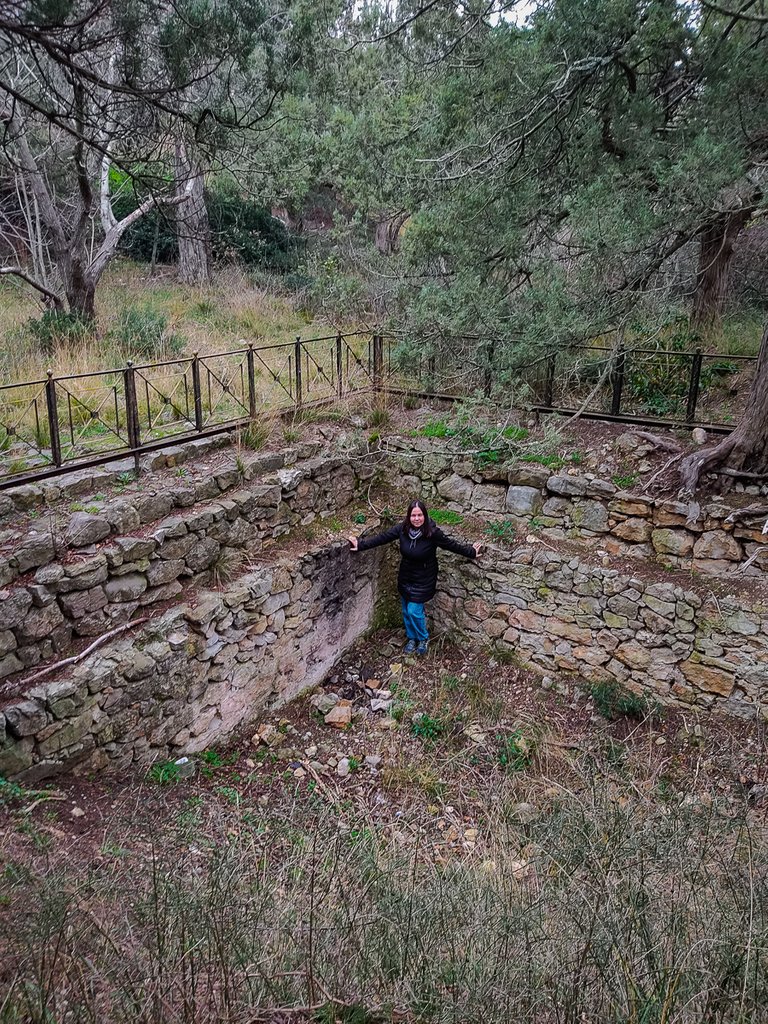 | 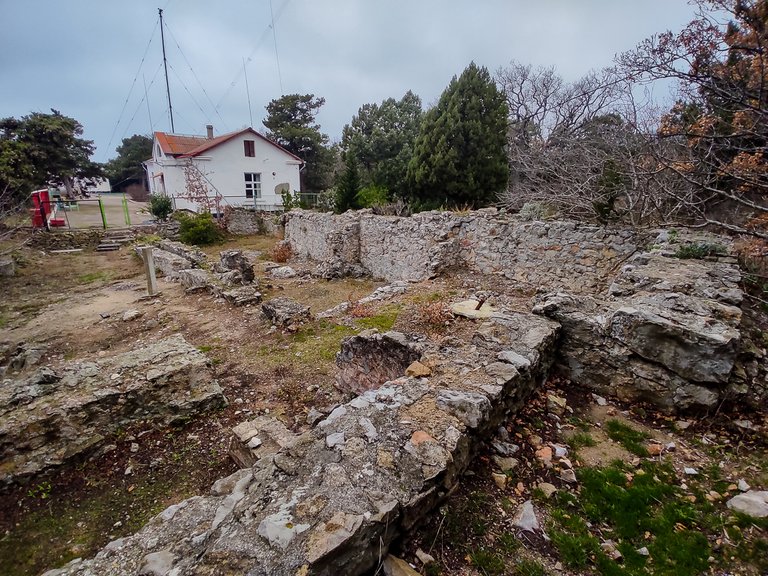 |
The camp was finally abandoned by the Romans in the middle of the 3rd century AD, although people lived there after that. From the ancient Roman buildings, alas, very little has been preserved at the present time. Over the past centuries, after the Romans left the peninsula, almost everything was destroyed, and archaeological work was not carried out as much as we would like, but connoisseurs of antiquities still have something to see. However, let's get back a little closer to our days, the modern Ai-Todor lighthouse and its vicinity.
After the initial construction in 1835, in 1876 the lighthouse tower was radically rebuilt and has survived to this day in this form. The construction was carried out by an English company whose name I could not find.
A little earlier, the territory on the cape around the lighthouse, which was empty due to the lack of fresh water, revived: the land was bought by one of the sons of the Russian Emperor. By his order, the architect N.P. Krasnov designed the estate, the size of which was 16 hectares. There was a manor house — now it is called Villa Charax — and a large beautiful park descending to the bay. Part of the park is visible in the photo, it stretches along the entire bay.
The manor house and especially the Harax park are well preserved and definitely deserve attention. Now on the territory of the former estate there is a sanatorium Dnepr. Access to the park is free. You can walk in it for a long time, at least all day, besides, there is a restaurant where you can eat. After seeing the remains of the fortress, Villa Charax and more modern sanatorium buildings, walking in the park and admiring the lighthouse with a lookout, you should definitely go down to the bay with a promenade and a beach. The promenade is now under reconstruction, since there are few vacationers in winter. It’s good to walk around the park at any time of the year.
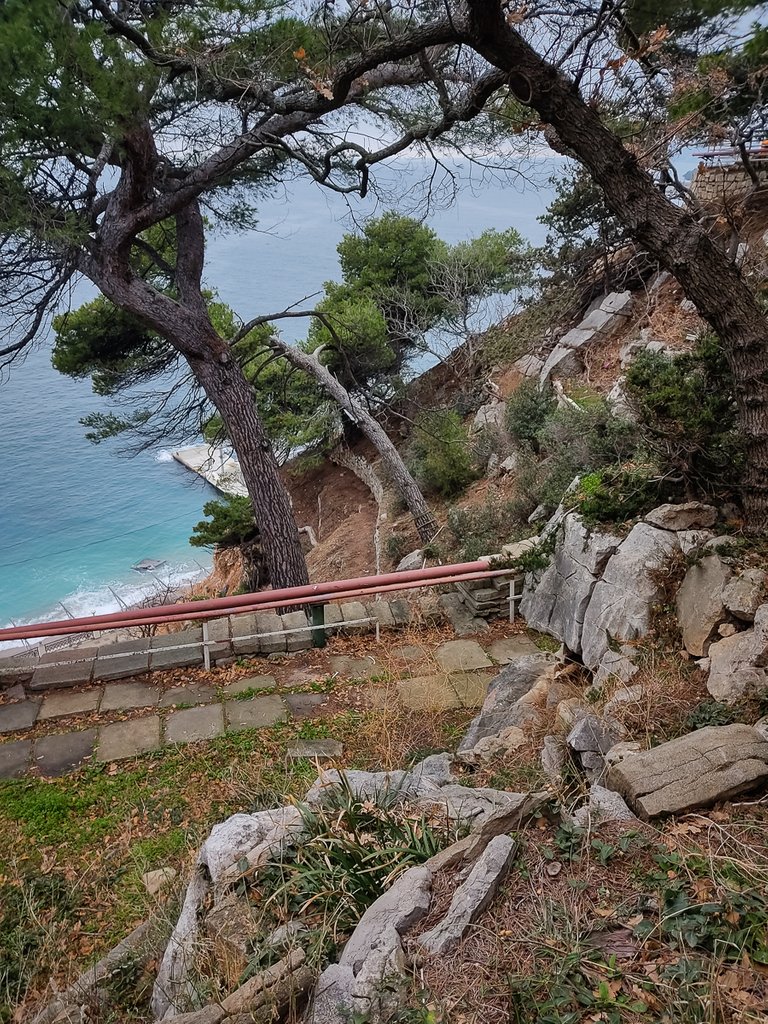 | 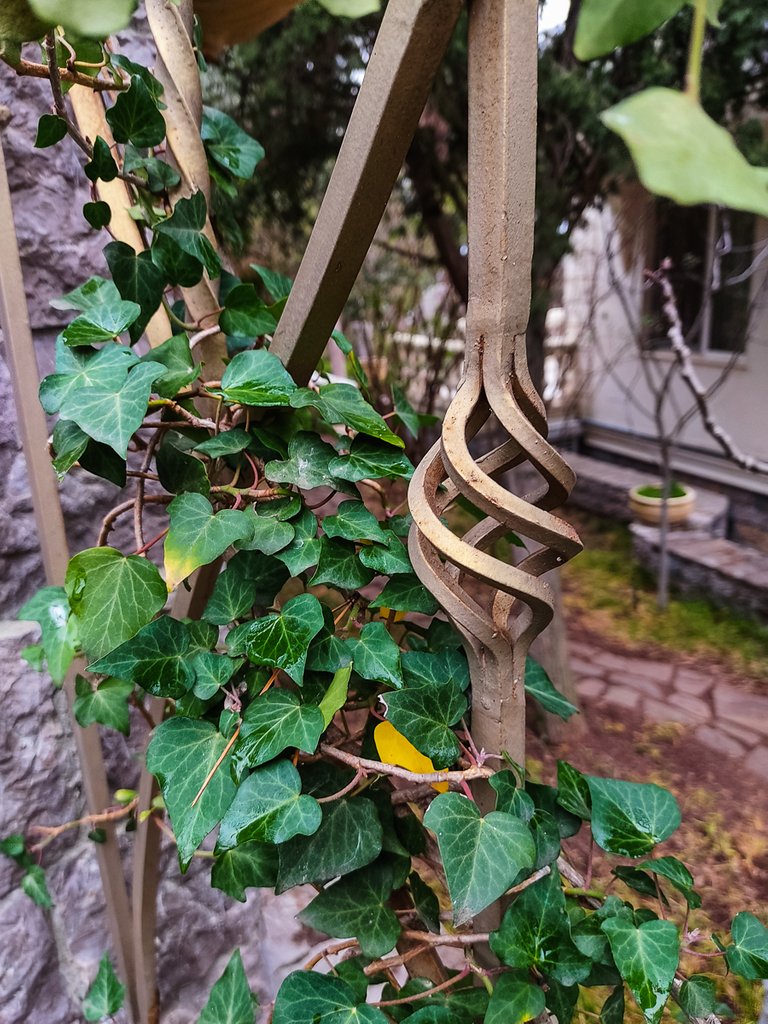 |  |
|---|
When we had some free time to wander around there, it was cloudy and sometimes it rained, so we didn’t take cameras with us. We decided to just enjoy the walk and took pictures only on the phone. In the pictures below — a view of the embankment from the path along the edge of the cape, a fountain and an antique-style pavilion in the park. I am not sure about the reliability of the information, but they say that the columns in the pavilion are ancient, remaining from those very Roman times.
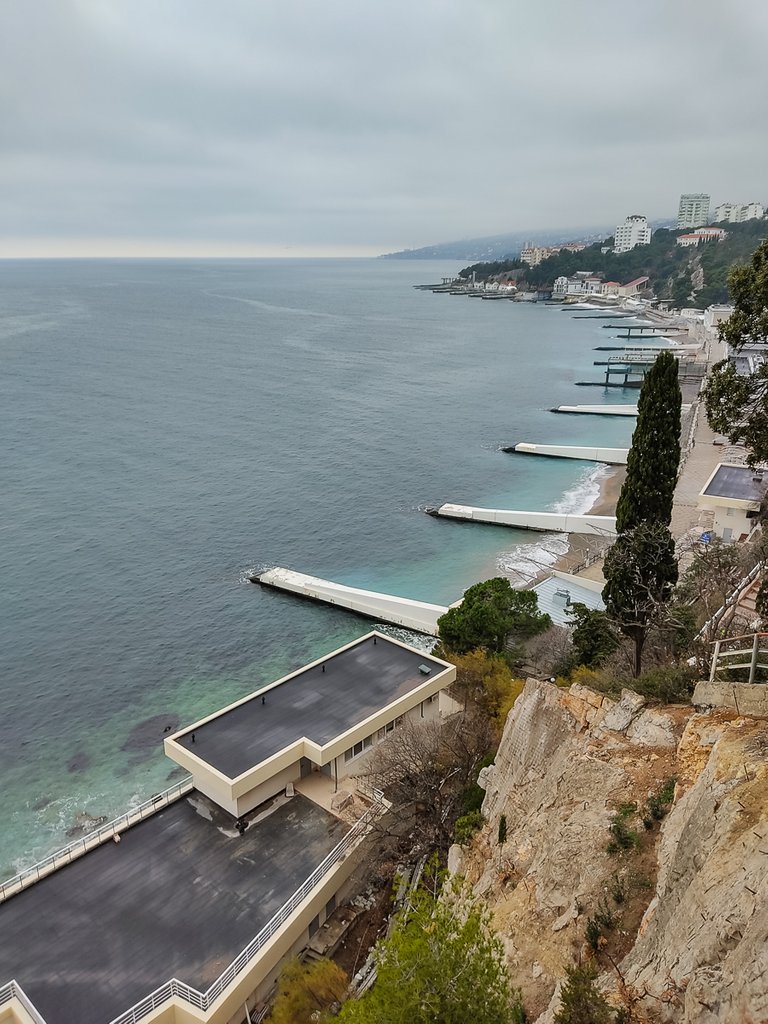 | 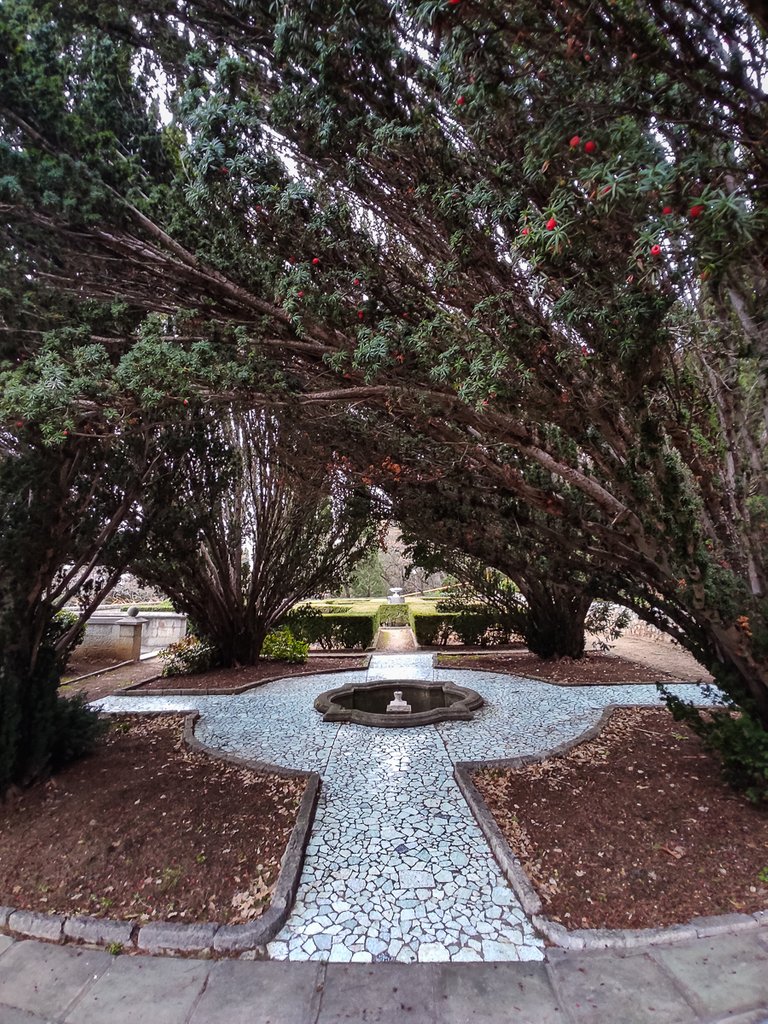 | 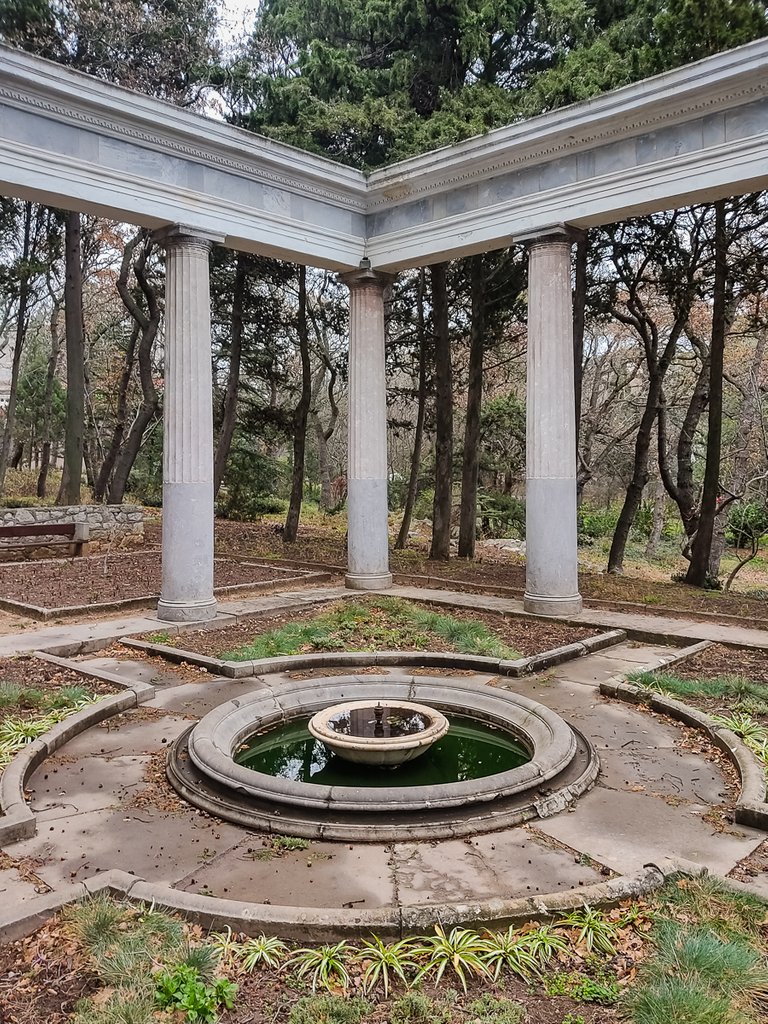 |
|---|
Part of the park near Villa Charax is arranged according to all the canons of landscape gardening art. With front stairs, labyrinths of hedges, lush beautiful bushes, fountains, benches, etc. Impressive even in winter, and in spring and summer it is, I think, very beautiful. The Villa itself is now closed for restoration and there was no point in photographing it. But take my word for it, it's very pretty :)
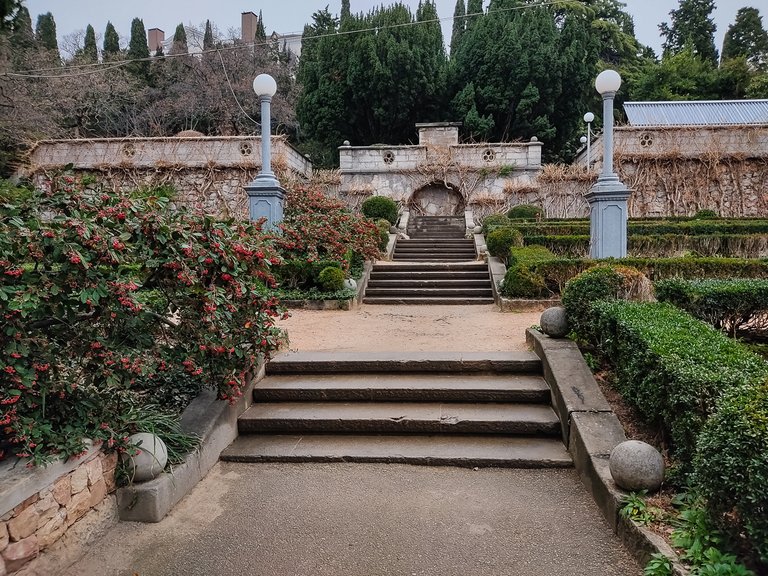 | 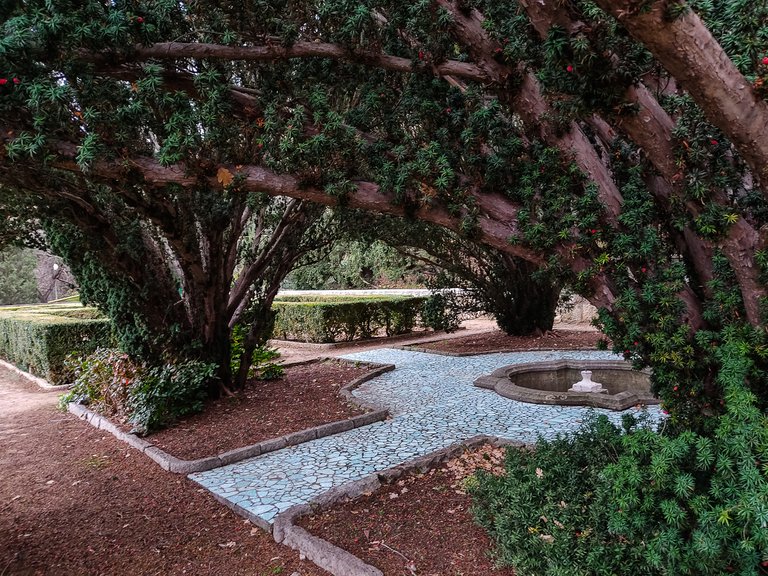 | 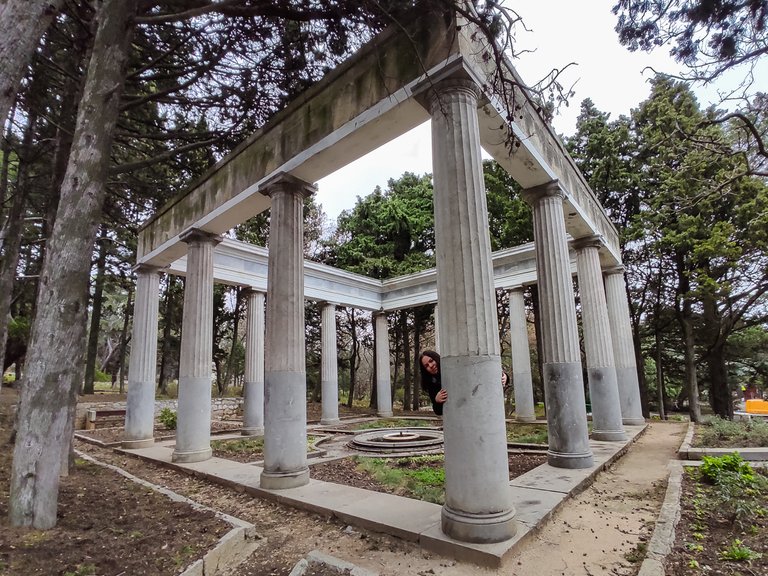 |
|---|
A few more photos from the promenade that is also being reconstructed and the view from the edge of the cliff. Curving layers of rock (sandstone or something like that) are amazing. They have so many fossils of small marine mollusks! We looked at it for half an hour. In some places, the slope is poured with concrete, apparently to strengthen and prevent crumbling. What a pity. And pear cactus with its bright fruits is simply pleasing to the eye.
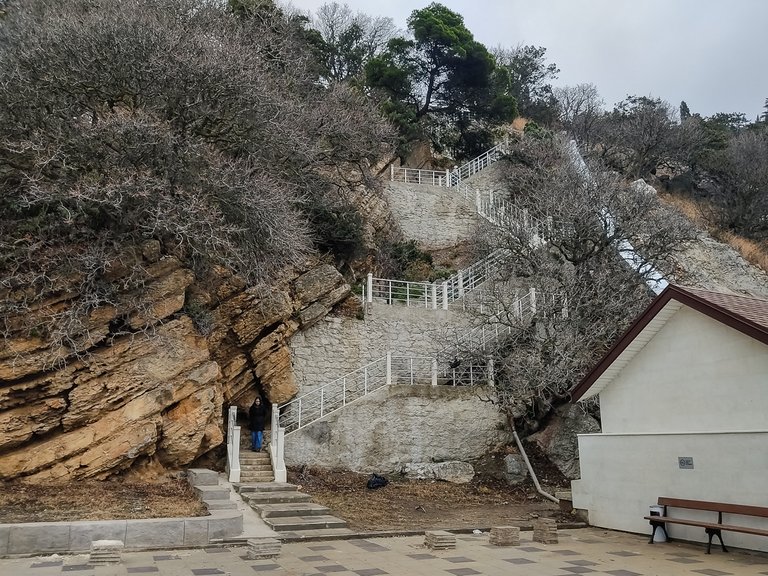 | 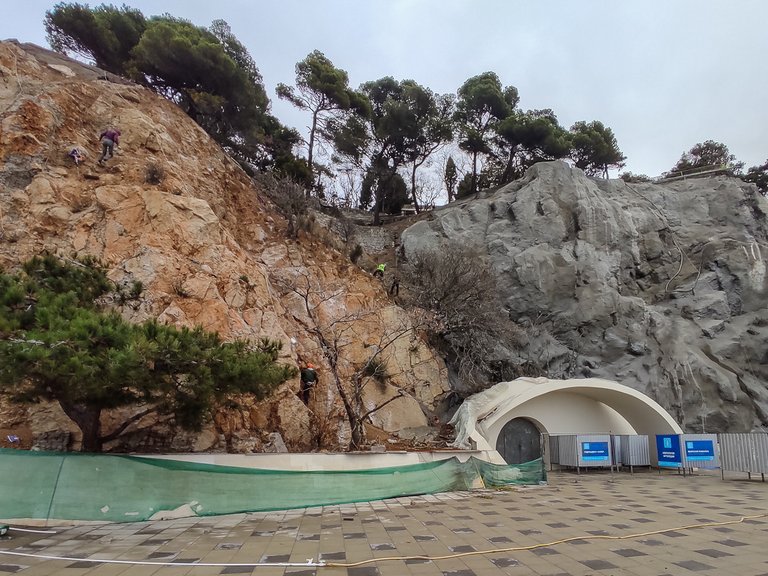 |  |
|---|
The Ai-Todor lighthouse, although located on the territory of the park and the sanatorium, unfortunately, is not open for free visiting. But it can be seen from the observation deck a little lower in the park. However, I hope that this may change soon: it has tourism potential.
Well, it's time to look at some details of the lighthouse. The combination of the upper glass and metal tier with the stone lower tier in a classic style is an eye-catcher. At the base, the building is a regular octagon. On its sides there is a door, 2 windows in the form of a portico and several walls with places for boards or something like this.
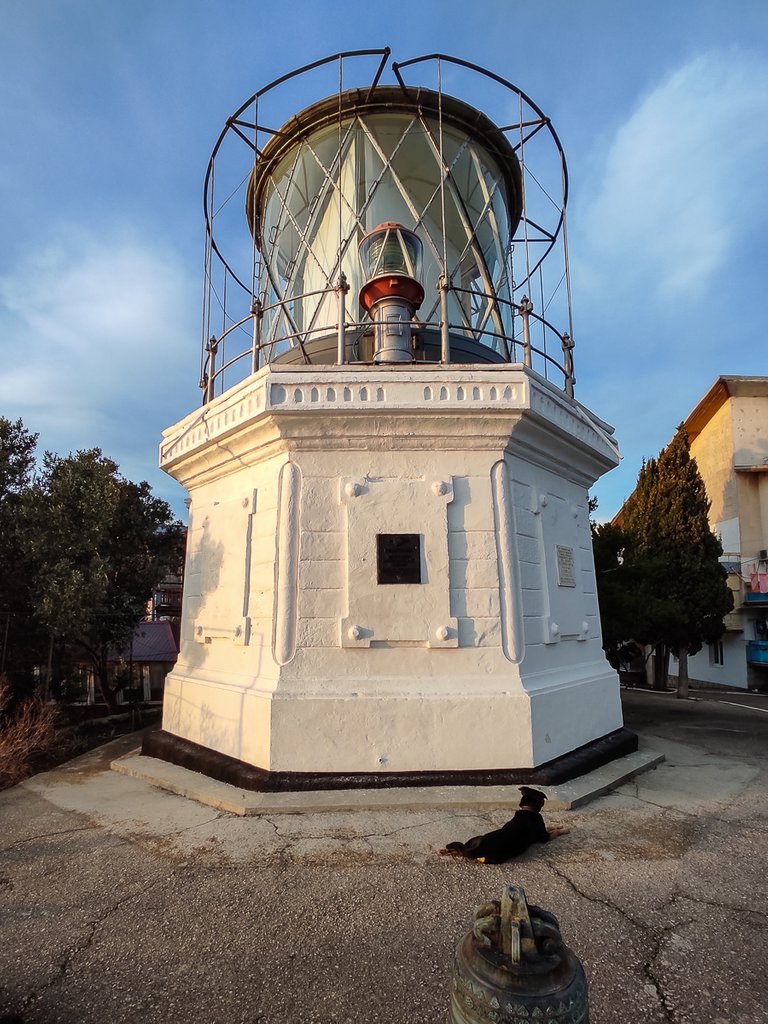 | 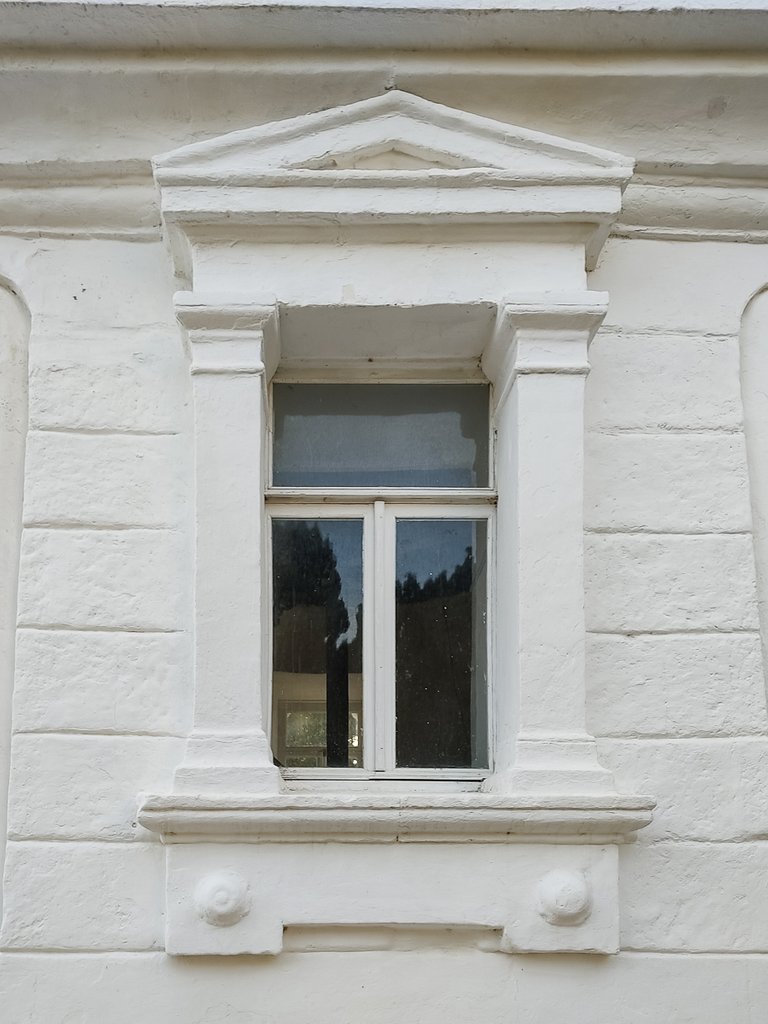 | 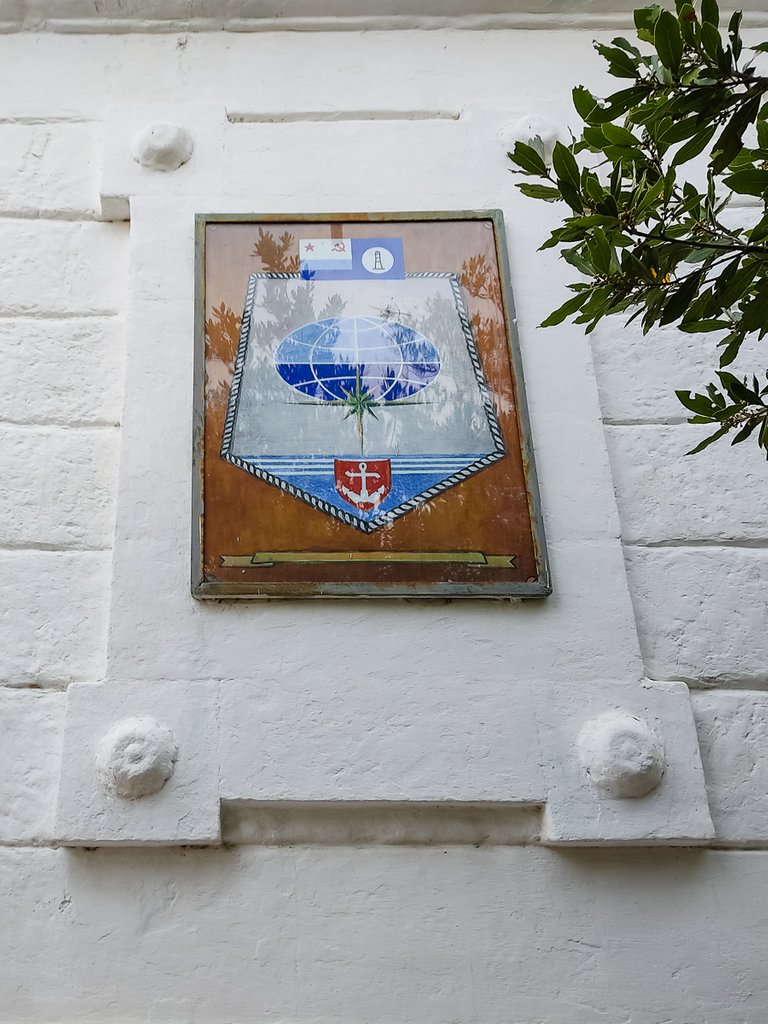 |
|---|
The upper floor is a cylinder glazed in a circle. The 80 diamond-shaped glasses that make it up were made in England. At the back, on the side facing away from the sea, the glass is painted with an opaque gray-silver paint — both for greater protection of the glass and in order to less disturb the surrounding houses with light. Inside, on a pedestal, there is a large beacon lantern, which is drawn with white curtains during the day.
Inside, everything is quite simple and laconic. The first floor is almost empty, and an old spiral staircase leads to the second. It is metal, with nice figured columns under railings and patterns on the steps. All this remains from the 19th century and has been preserved in a very good condition.
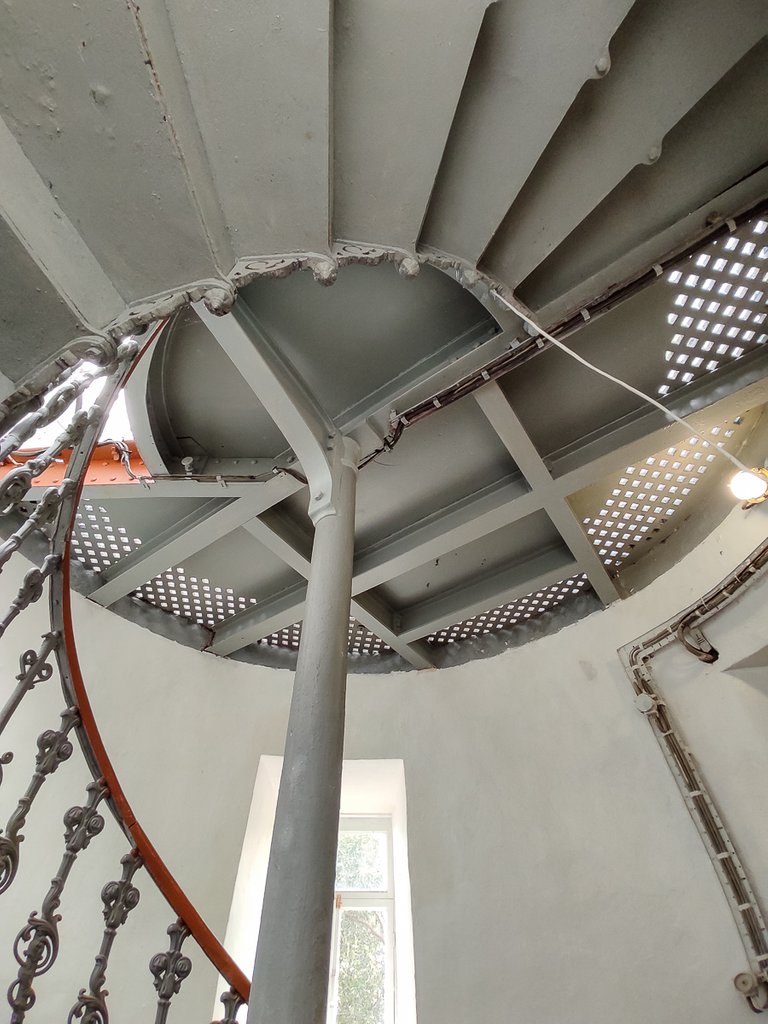 | 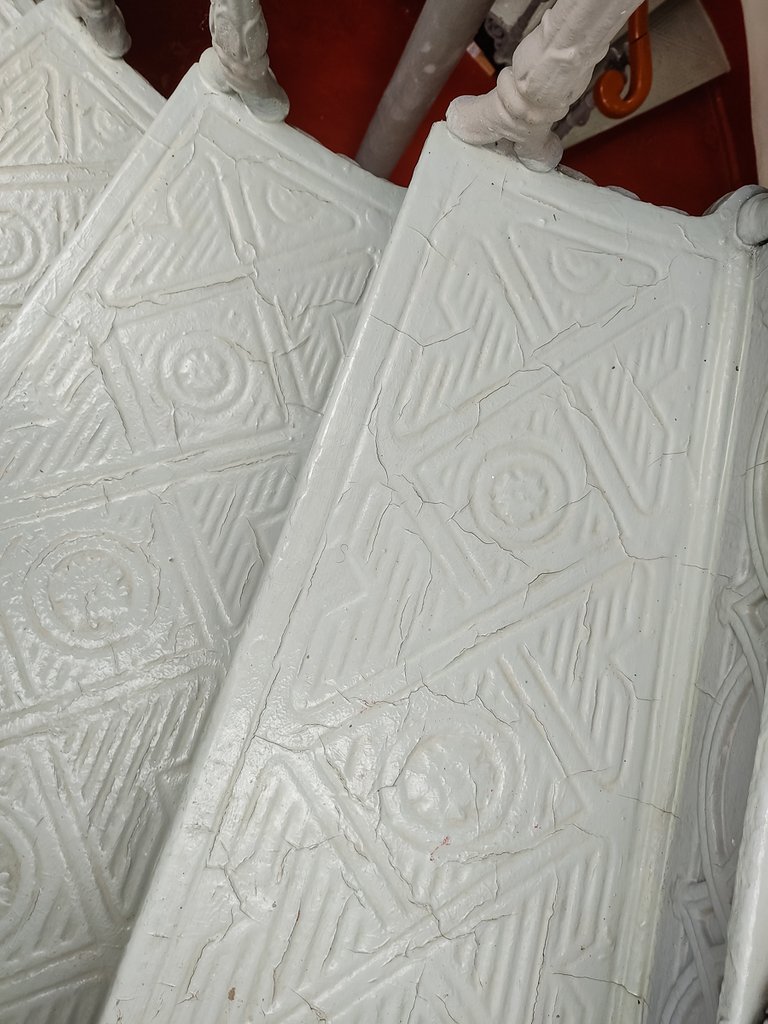 |
|---|
On the second floor, in addition to a platform with a beacon lamp, there is a small, not immediately noticeable, door to the outside — to an open balcony along the perimeter of the glass tier, enclosed by railings and a metal frame. Yes, we almost have to crawl through this door, but the most interesting and nice thing about it is the door handle. It is made in the form of a hand on both sides of the door. As we were told, this is an exact copy of the hand of the architect (except maybe the size).
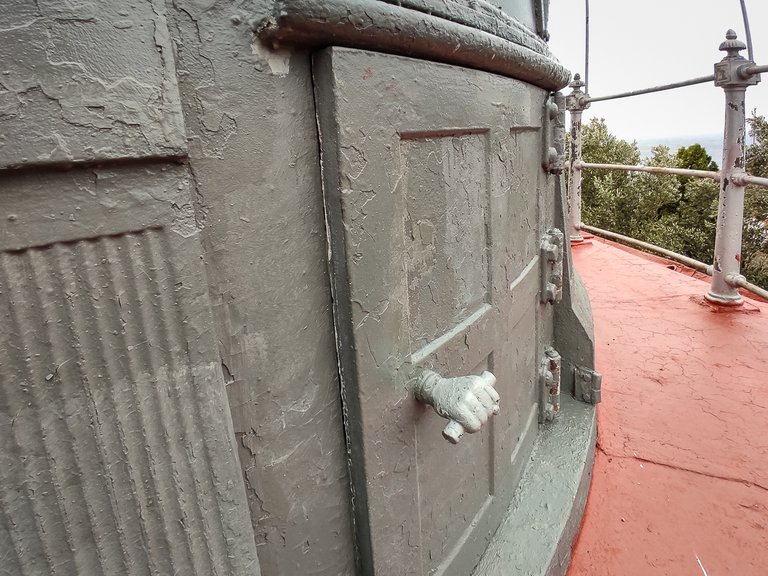 | 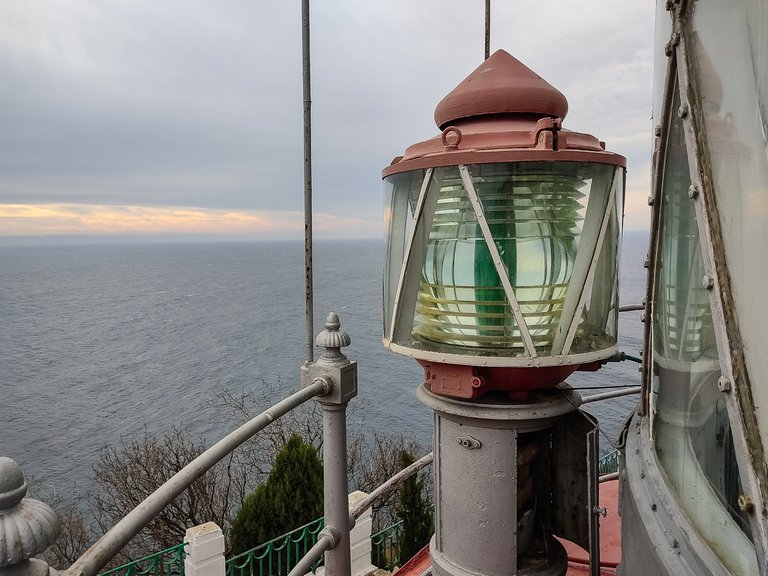 | 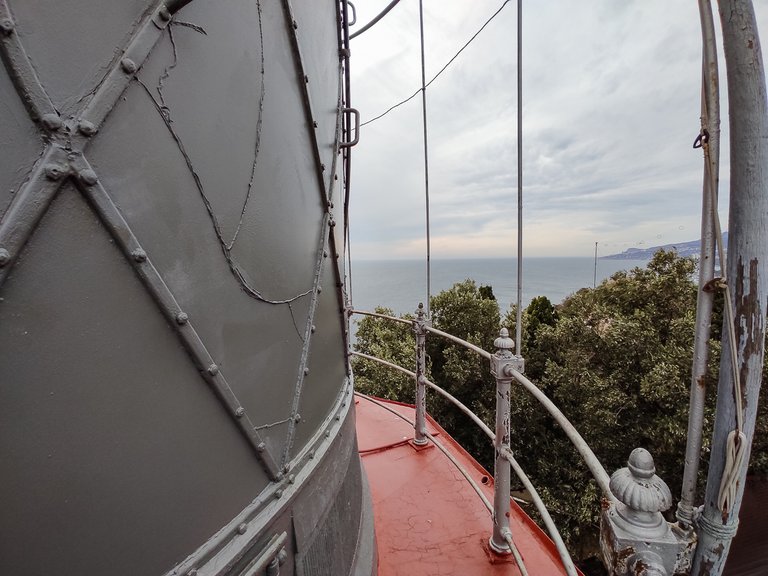 |
|---|
The lighthouse itself is in good condition, but, of course, it needs at least some cosmetic repairs. Wind, humidity and tome never spare buildings. But in general, a very beautiful and pleasant place, the building exudes cosiness, reliability and a little old times. This historical place was visited by many interesting people all over the world, including members of the Russian imperial family, writers, artists, sailors...
The photo in the center is a view of the sea from the fence in front of the lighthouse, in the photo on the right is a view from the top floor of the lighthouse to a corner of its territory, where we especially liked.
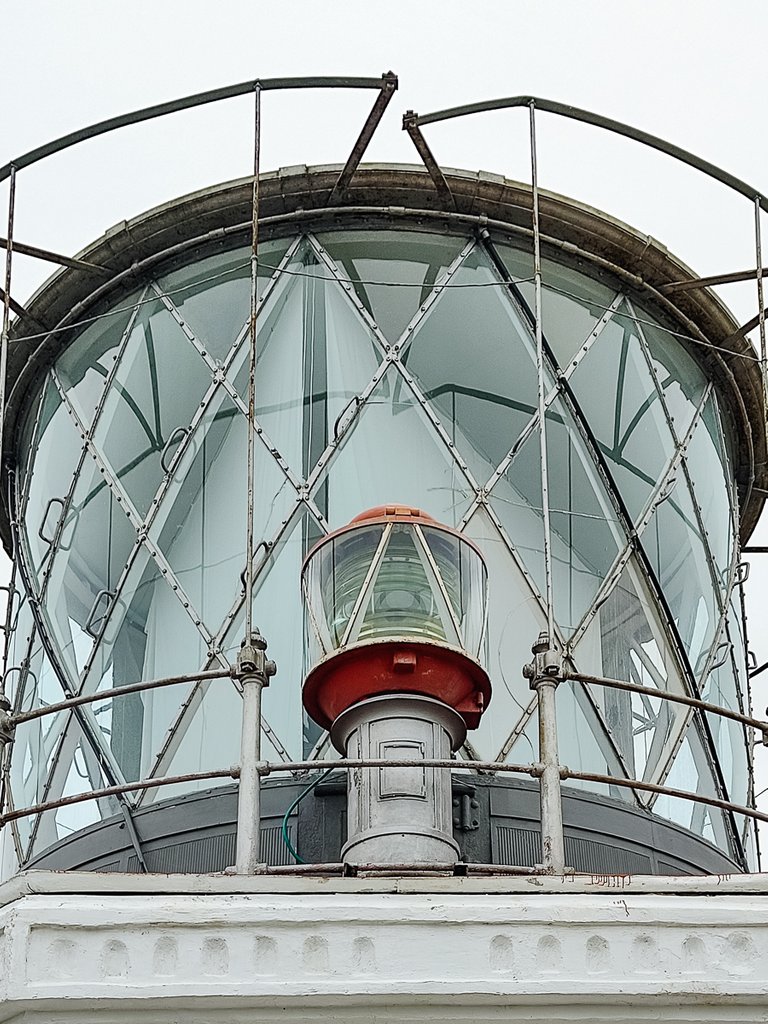 | 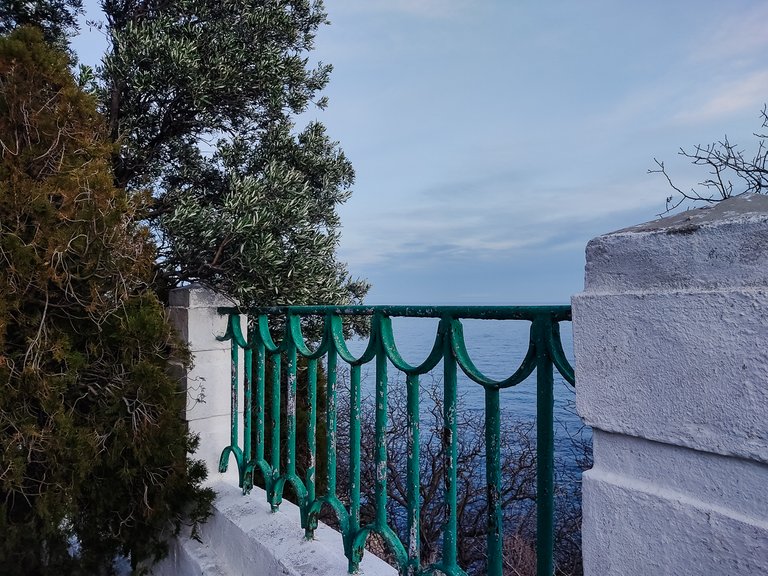 | 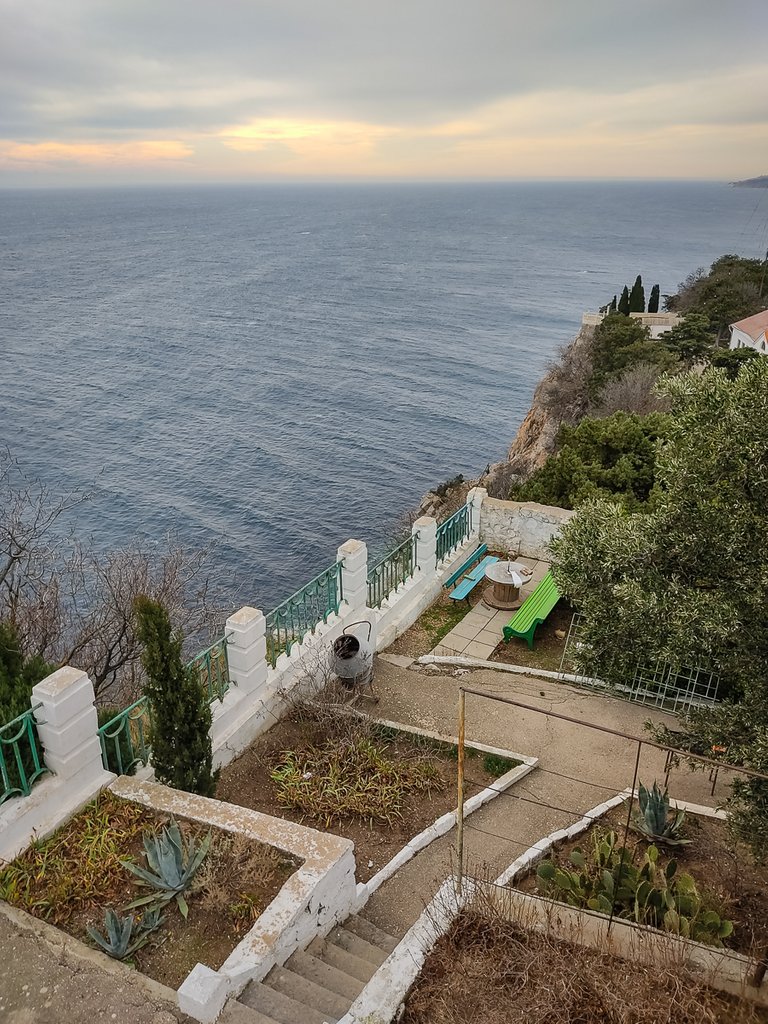 |
|---|
You can see it better here. In the corner, near the fence on the edge of the cliff, there is a wonderful bench with a table, it is bright green. We loved this place. It is secluded and it is good to sit there at any time and watch the sea, listen to the splash of the waves crashing on the shore...
Standing on the fence, you can see the foot of the cliff. It is quite far below, and the height is mesmerizing.
Well. I mostly told about the lighthouse itself. And soon (I hope :)) there will be the second part of the story: I will tell you about the house of the lighthouse keeper, also built in the 19th century, about the impromptu museum that is arranged in it, and show a photo chronicle of one beautiful sunset at the lighthouse.
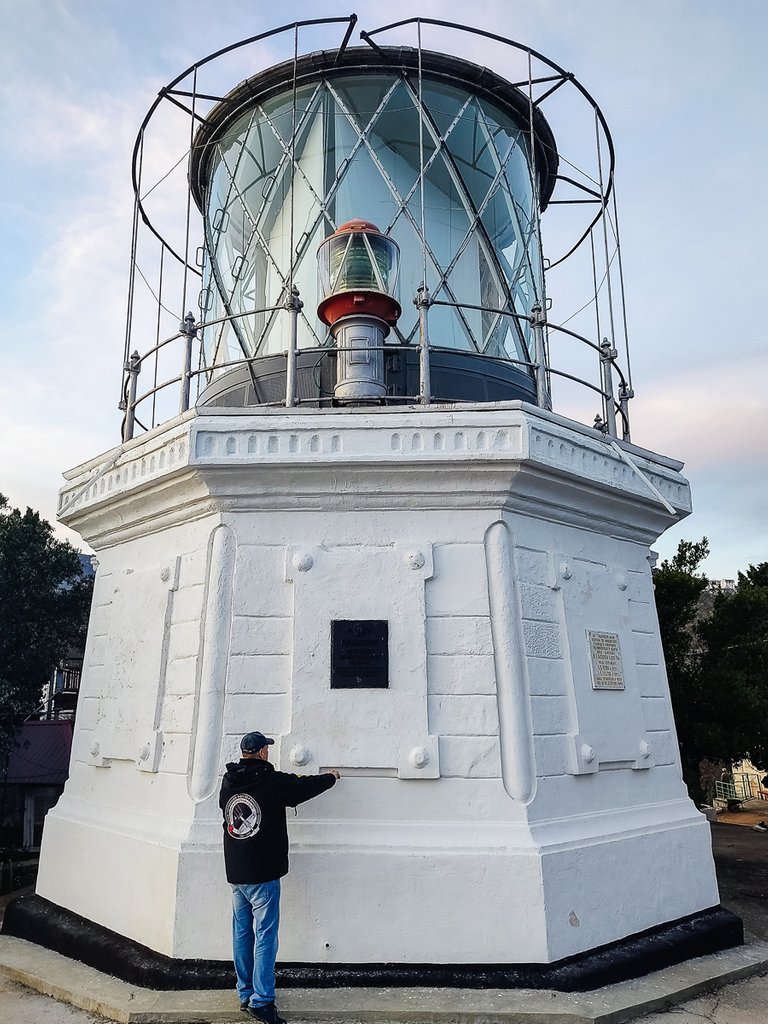 |  |
|---|
It's better to watch photos in high resolution.
Camera: DJI Mavic 2 Pro (large photos) and smartphone (smaller ones).
You can also see my photos in my blog LJ and in my profile on NatGeo. You can read a short interview with me here.

